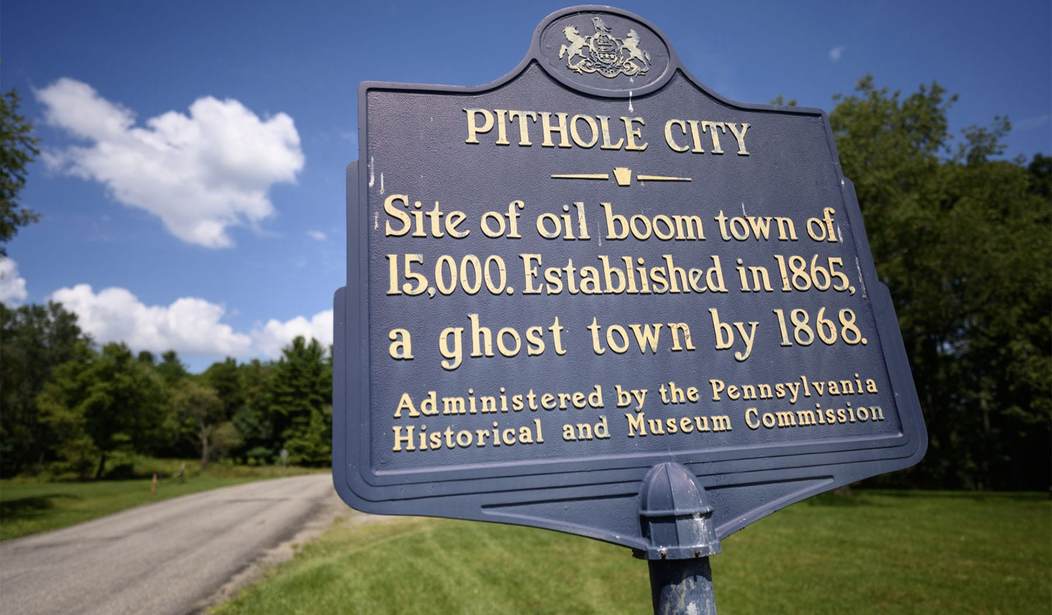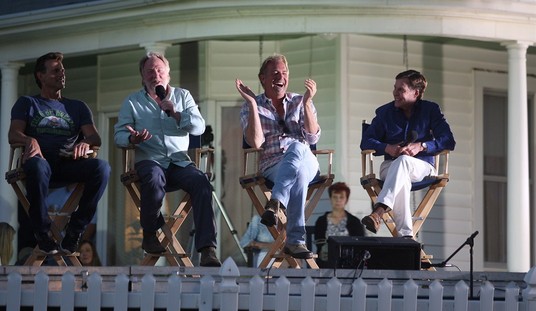PITHOLE CITY, Pennsylvania — “Pap, I think you had better come see Pithole.”
T.B. Whitacre penned those words to his grandfather on July 30, 1865. In January, just seven months earlier, an oil strike along Pithole Creek at Holmden Farm had drawn him and hundreds of people, mostly speculators, to the property where the oil was first discovered. By May, a town was laid out in the lush Venango County wilderness filled with hemlocks, pines, rattlesnakes, bears, deer and porcupines. By July, it was rapidly becoming overgrown with people and derricks, and clogged with buildings. By Christmas 1865, nearly 20,000 people lived there, including Whitacre.
Before all that, only two farms occupied this land, and its inhabitants could be counted on fingers.
By January 1866, the third-busiest post office in Pennsylvania, behind only Pittsburgh and Philadelphia, was in full operation. Fifty-four hotels lined the streets, streets that were the first in the world to be fully illuminated by petroleum and as muddy as a black swamp. There were three churches as well, plus theaters, two railroads and the first daily newspaper in the county. And the world’s first pipeline was built here.
“I don’t suppose there was a city built in such short time,” wrote Whitacre in awe. “They say there are 1,000 carpenters building houses. One can barely hear himself speak, there is so much noise in the city from the sound of the hammer and the buzz of the people. You have no idea the vast number of people that are here.”
The first hotel, the Astor, was built in a day. There were also several luxury hotels: the Chase House and the Danforth House, located on the corner of Holmden Street and First Street and opened on Christmas Eve 1865. Isham’s Jewelry Store was also on Holmden Street. So was a restaurant called Terrapin Lunch. There was Dr. Christie’s house on First Street, the banking house of Prather and Wadsworth, along with the residences, dances houses and law offices that all sprung up, creating a magical, muddy city built on opportunity, aspiration and greed. All of it fell when oil did.
It was the fastest-growing city in America in the valley that changed the world.
Within one year, the population would shrink to less than 10% of that of the heady first year. Within four years, it had vanished. The Danforth House sold as firewood for just $16.
Western Pennsylvania was oil country, and for a brief moment in history, Pithole was the best and the worst of it. It held all of the dreams and greed and enterprise needed to prosper as well as fail.
When Col. Drake first struck oil here in the lush wilderness of Western Pennsylvania, America was on the cusp of the Industrial Revolution and in desperate search for a solution for its need for illuminating oil. The price of whale oil, thanks to high demand, was only affordable for the wealthy to light their homes every evening. Lard oil, tallow oil and coal oil derived from shale were available, yet there was nothing affordable that burned in a bright, clean, safe manner.
It was a problem retarding the growth of urbanization and industrialization. No lights at night meant no work in the factories or open businesses in the cities.
Oil was the savior. Western Pennsylvania started the boom at Drake Well, 12 miles from here. When the Frazier Well, the first well drilled along Pithole Creek, struck oil on Jan. 7, 1865, it produced an unheard of 250 barrels of oil per day.
Speculators got a whopping $8 a barrel for it, marking the beginning of the Pithole oil boom, followed in the blink of an eye by the building of the frontier metropolis. But Pithole quickly became a victim of the abundant riches. The wells produced so much oil that a glut slashed the price to $2.50 a barrel by 1866.
The population went from 20,000 people in 1865 to less than 2,000 in under a year.
All traces of the town disappeared in short order.
The entirety of the town was bought by a farmer for $1,500 to settle debt. The publisher of the local newspaper bought the land 100 years later and gave it to the Pennsylvania Historical and Museum Commission. Walking along its streets and now-mowed paths is haunting. The only sound you hear is the whistle of the wind along the side of the mountain.
A hawk is overhead, while several bucks skirt the tree lines of the hemlock, pines and lush forest that have returned, replacing the scarred land once ravished by the oil rush. Trout fishing is also abundant, and scat gives evidence that bears have returned.
Pithole is now a ghost town. The voices of what once was are long gone. It is a reminder that we pass once-thriving towns and cities every day: Rust Belt towns along the Ohio River, textile towns in the Carolinas, or small towns along the tracks where railroads no longer stop or highways have passed them by.
While Pithole’s death was so swift that it lacks nostalgia, no one was really rooted to it. Other cities’ and towns’ slow deaths are more painful as they struggle to hold on. Amid the coronavirus pandemic, even larger cities such as Richmond, New York and Portland are experiencing the impact of protests and riots and that emptiness that happens when people just stop coming to town.
Here, there are a couple of wells and foundations left, but really, all that stands are the steps to the rectory of the Pithole Methodist Church at the peak of the hill overlooking the town. It leads symbolically up to the heavens. A plaque dedicated in 1959 placed on the church’s altar reads, “It remained after all else had vanished.”
Salena Zito is a CNN political analyst, and a staff reporter and columnist for the Washington Examiner. She reaches the Everyman and Everywoman through shoe-leather journalism, traveling from Main Street to the beltway and all places in between. To find out more about Salena and read her past columns, please visit the Creators Syndicate webpage at www.creators.com.









Join the conversation as a VIP Member